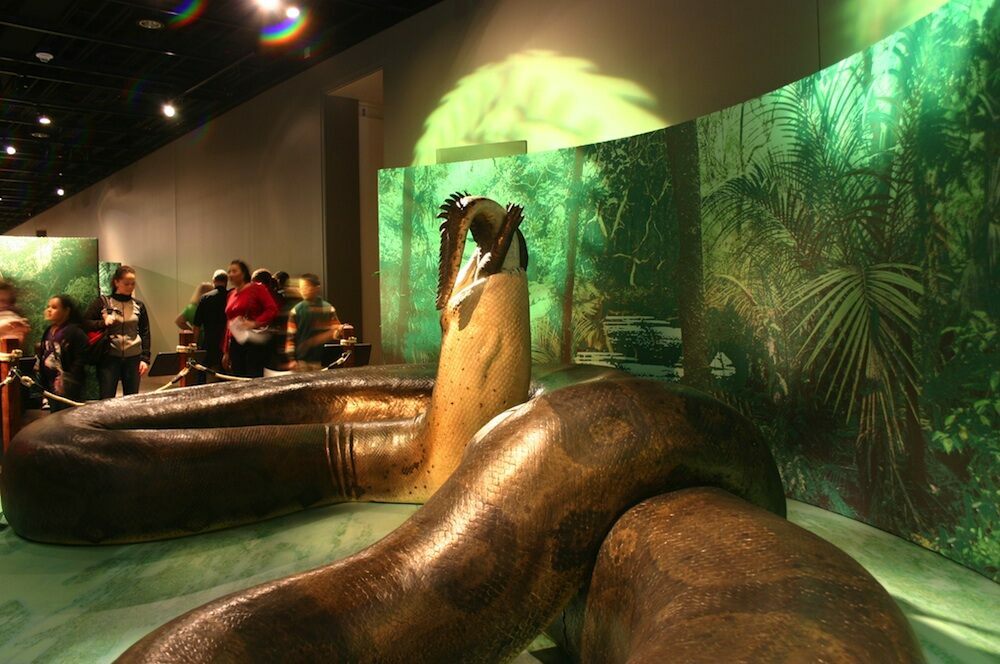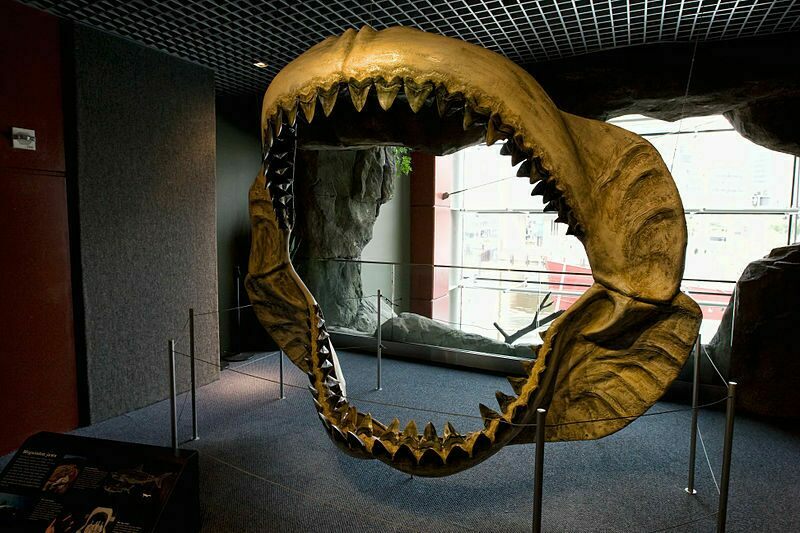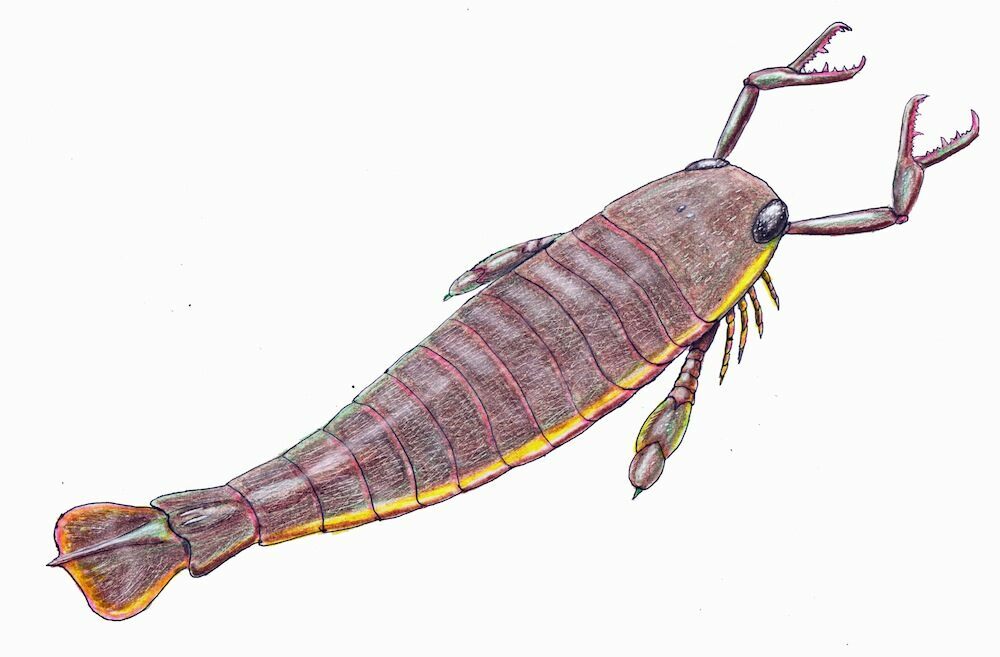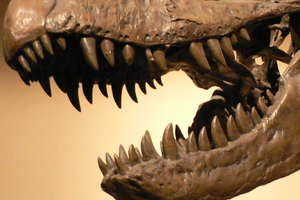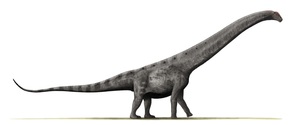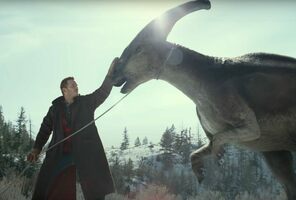Top 11 Scariest Prehistoric Animals
What makes something scary, creepy, terrifying, or just so strange that it haunts our dreams? For some, all it takes is a spider or a snake; for others it needs to be an eldritch horror straight from H.P Lovecraft’s world. Many of the more famous prehistoric beasts gained notoriety because there’s something about them, be it the size of their teeth, that they’re covered in spikes, or their sheer size, that elicits a primeval sense of dread in our mammalian brains. Hopefully somewhere in this article is a creature that sends a bone chilling tingle up your spine; one that you’re glad went extinct. Now it can only haunt you in your dreams.
11. Dunkleosteus
This 33 foot long armored fish from the Devonian era lacked teeth, but its jaw contained razor sharp protrusions of bone that it could use to pierce and cut through its prey. These bones grew continuously and as they did, the edges rubbed together with those of the opposing jaw, acting like self sharpening shears. This would ensure the “fangs” were always ready to chomp into armored prey like arthropods, ammonites and other fish. This four ton monster fish patrolled inshore waters and could snatch prey up by opening and closing its jaws within 50-60 milliseconds.
10. Helicoprion
The mystery of this bizarre fish starts with a weird fossil and numerous attempts to figure out what it was and how to classify it. Helicoprion puzzled paleontologists and ichthyologists for over a century. The only remains of this creature, up until 2013, were from a fossilized whorl of teeth. While most scientists agreed that the teeth belonged to the lower jaw, that didn’t prevent the presumed location of the teeth from migrating around the body in sometimes fanciful arrangements that can be seen in numerous illustrations and reconstructions. With the later discovery of some portions of a jaw, the location of its buzzsaw-like teeth were finally determined to fill the lower jaw. Strangely, there were no upper teeth; so this creature could disgustingly gum and bite you at the same time. The jaw would close, rotating the teeth backwards, much like a circular saw blade. It probably fed on the soft bodies of squid and other cephalopods. The whorl of teeth was formed as they continuously grew outwards, creating a spiral as it aged; the teeth at the beginning of the whorl being small and gradually increasing in size toward the end. Another fish with an equally odd and terrifying face, Edestus, had offset scissor like jaws that protrude out of its face.
9. Arthropleura
This in not something you want to see crawling around the woods when you’re out for a hike. Arthropleura was an 8.5 foot long millipede from the Carboniferous era and through it was herbivorous, likely feeding on dead plant matter like modern millipedes, it still has scare factor. Just because it won’t try to eat you doesn’t prevent it from being creepy while it scuttles about. Fossil trackways have been discovered showing that Arthropleura could move and maneuver quickly, undulating hundreds of legs in rhythm to nauseate and disturb anyone watching. These are the largest know land invertebrates of all time and it is unlikely the they had any predators, but it could probably rear up into a defensive posture and look you straight in the eyes.
8. Smilodon
The famous saber-toothed cat lived in North and South America during the Pleistocene epoch. It was around the size of modern lions and tigers, but with massive upper body strength that it used to wrestle its prey to the ground. It would then use its serrated, 11" long fangs to give a killing bite to the throat or a stabbing wound to the lungs of its victim. Either way, if it ran you down, those long teeth would puncture your skin and sink down into your flesh. While its bite may have been weaker than that of modern big cats, it still makes for a terrifying creature.
7. Livyatan melvillei
This extinct whale was named both for the monstrous sea creature Leviathan from the old-testament that “…when he rises up, the mighty are terrified; they retreat before his thrashing” and for Herman Melville, the author of the novel Moby Dick, a tale of an accursed white whale that terrorized Captain Ahab and eventually brought about his death and the destruction of his ship and crew. This is an amazing namesake to live up to. Livyatan melvillei is related to modern sperm whales like Moby Dick and lived during the Miocene epoch. It was 44-57 feet long and had a 10 foot long skull that housed forty 14.5" long teeth. These are the longest teeth used for feeding known from any animal, extinct or alive. They fed on large prey at the surface of the water including other whales. This whale likely became so large because it was competing directly with megalodon for food.
6. Spinosaurus
Spinosaurus is one of the most spectacular and horrible creatures that ever stalked the Earth. It had an elongated skull much like a crocodile and a snout filled with approximately 64 straight, conical teeth. Evidence suggests that is was semi-aquatic, so there was nowhere to escape from this fish and dinosaur devouring monster. Spinosaurus is currently the largest of all known carnivorous dinosaurs, even larger than T. rex and Giganotosaurus. While the exact size is debated, recent finds and studies suggest that Spinosaurus may have reached 41-59 feet in length and weighed in excess of 20 tons. It had elongated neural spines that ran along its back creating a sail-like structure that made it look even larger and more terrifying.
5. Sarcosuchus
Sarcosuchus was a 40 foot long, 10 ton, crocodile-like reptile from the Cretaceous era that lived in what are now Africa and South America. Any predator that can move between land and water is even harder to escape when it wants to eat you. It had a 6 foot long skull that contained 132 teeth. What truly sets this creature on the top 10 list is that Sarcosuchus was larger than almost all of the dinosaurs that lived in the same environment, and evidence points to a diet that included large terrestrial prey; this monster ate dinosaurs. It’s true that its diet consisted largely of fish and it spent most of its time submerged in the water, but the fact that it could take down something like Suchomimus at all is troubling.
4. Titanoboa
For those of you with ophidiophobia, this one’s for you. Titanoboa was a 42 foot long snake that lived during the Paleocene epoch. It likely hunted much like crocodiles do, lurking, partially submerged at the water’s edge so that it could ambush thirsty, unsuspecting animals. It would strike from the water and wrap itself around its prey, delivering a crushing death. It lived in the rain forests of South America where temperatures were warmer than the tropics of today. This allowed the cold-blooded reptiles to grow larger that modern reptiles can. This snake would have Indiana Jones trembling in his fedora.
3. Giganotosaurus
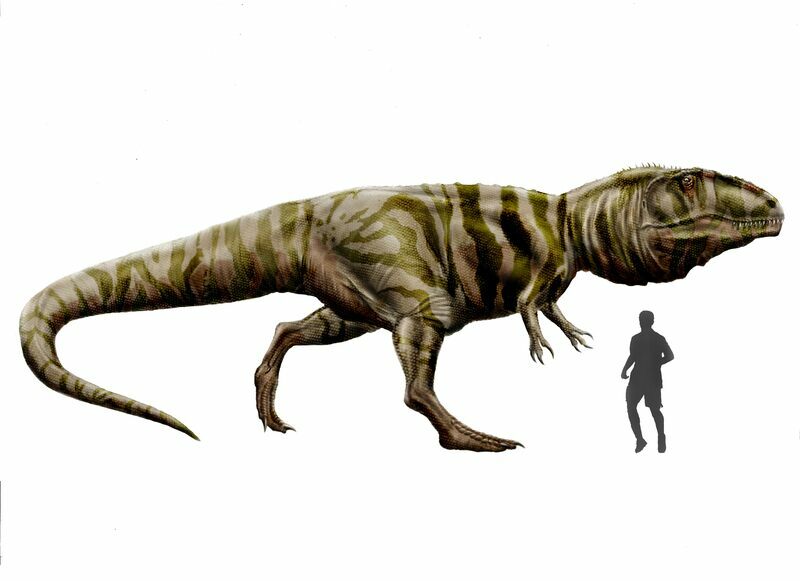 Giganotosaurus was 43 feet long and larger than the size of Tyrannosaurus rex, but only by 3 feet. It had a 5.2 foot long skull with 64 eight inch long compressed and serrated teeth that were made for slicing through flesh, though they were not capable of crushing bone like the teeth of Tyrannosaurus. Giganotosaurus is from the Cretaceous period and lived in what is now Argentina. It was related to the nearly equally sized Carcharodontosaurus from Africa. Evidence suggests the possibility that Giganotosaurus was a pack hunter and that they hunted large sauropods. This would make it the only theropod that actively hunted sauropods. Another interesting feature is that the lower jaw was broadened slightly, allowing it to also handle smaller prey. It’s easy to imagine Giganotosaurus chomping down on the flesh of some goofy bipedal mammals if it had ever been given the chance.
Giganotosaurus was 43 feet long and larger than the size of Tyrannosaurus rex, but only by 3 feet. It had a 5.2 foot long skull with 64 eight inch long compressed and serrated teeth that were made for slicing through flesh, though they were not capable of crushing bone like the teeth of Tyrannosaurus. Giganotosaurus is from the Cretaceous period and lived in what is now Argentina. It was related to the nearly equally sized Carcharodontosaurus from Africa. Evidence suggests the possibility that Giganotosaurus was a pack hunter and that they hunted large sauropods. This would make it the only theropod that actively hunted sauropods. Another interesting feature is that the lower jaw was broadened slightly, allowing it to also handle smaller prey. It’s easy to imagine Giganotosaurus chomping down on the flesh of some goofy bipedal mammals if it had ever been given the chance.
2. Megalodon
This 59 foot long shark lived and hunted in the same waters as Livyatan melvillei. It had massive 7 foot wide jaws containing 5 rows of around 276 compressed, blade-like teeth that were made for cutting and grasping powerful prey. Sharks have skeletons made of cartilage that are not typically preserved in the fossil record, and so the jaws of megalodon and a few trace fossils are all paleontologists have to build their hypotheses. The body shape of a megalodon is likely similar to a larger and more robust great white shark. If megalodon exhibited ambush hunting behavior like great white sharks, it would have taken prey by surprise from below and made precision strikes to immobilize its prey with an amazingly strong bite. Sharks are also known for shaking their prey side to side to increase bite forces. Fossils evidence of teeth marks found on whale vertebrae suggests that megalodon was an active predator of large whales. Their teeth were built with a structure that would rarely crack, even if they hit bone.
1. Jaekelopterus
Three words, Giant Sea Scorpion. That’s right, this 8 foot long arthropod lived in the water and had pincher claws. Frankly, all of the eurypterids are scary as hell and this entire post could be exclusively about how terrifying these things look. Many of them look eerily similar to the face huggers from the Alien movie franchise; they are nightmare fuel. Jaekelopterus had segmented bodies with multiple specialized limbs, some with spikes. They had spring loaded claws to snatch up fish as they passed by, with the largest having an 18 inch spiked claw. Smaller sea scorpions are known to have crawled ashore to mate and even shed their outer skin. Imagine finding the molt of one of these monsters on the shore just before going swimming. Already with a sense of dread and paranoia, you distance yourself from the shore…and then you see a shadow in the murky waters.
What are your picks for the Scariest Prehistoric Beasts?
There are many, many more extinct critters that could make this list and it was hard to limit it to just ten. Most of these creatures are scary simply because of their monstrous proportions compared to modern animals, and especially compared to humans. Creatures that make us feel small add an interesting psychological level to the terror, as does the fact there are a lot of things we just don’t know about these extinct animals. The unknown can be terrifying in and of itself. As parting words, if you ever find yourself traveling through time, it is this author’s humble suggestion that you stay out of the water. In fact, don’t go anywhere near the water. Comment below...
 Reviews
Reviews
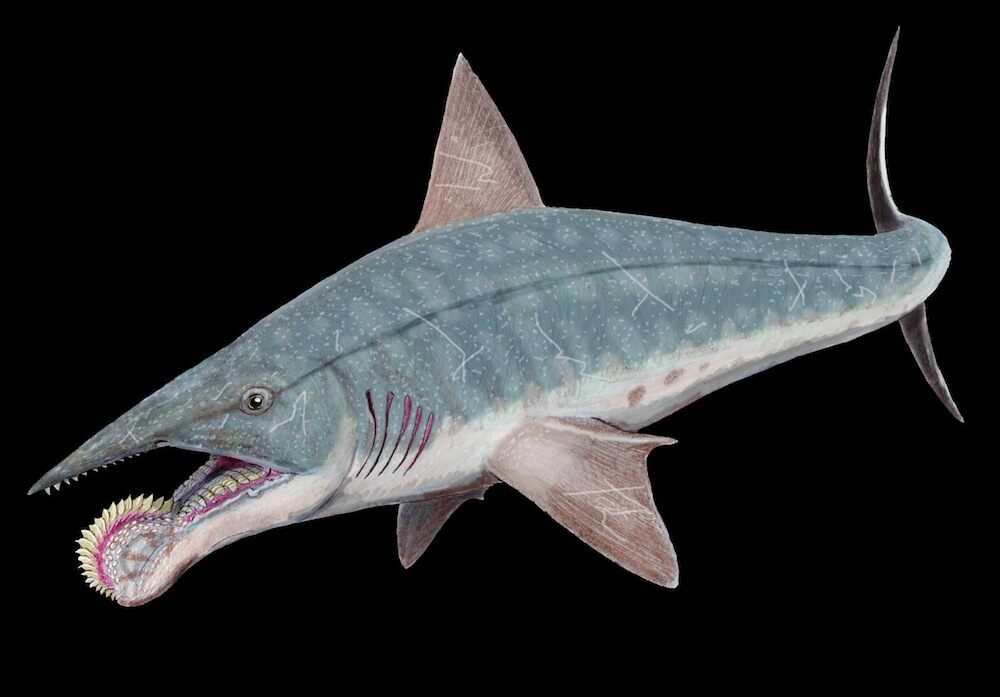
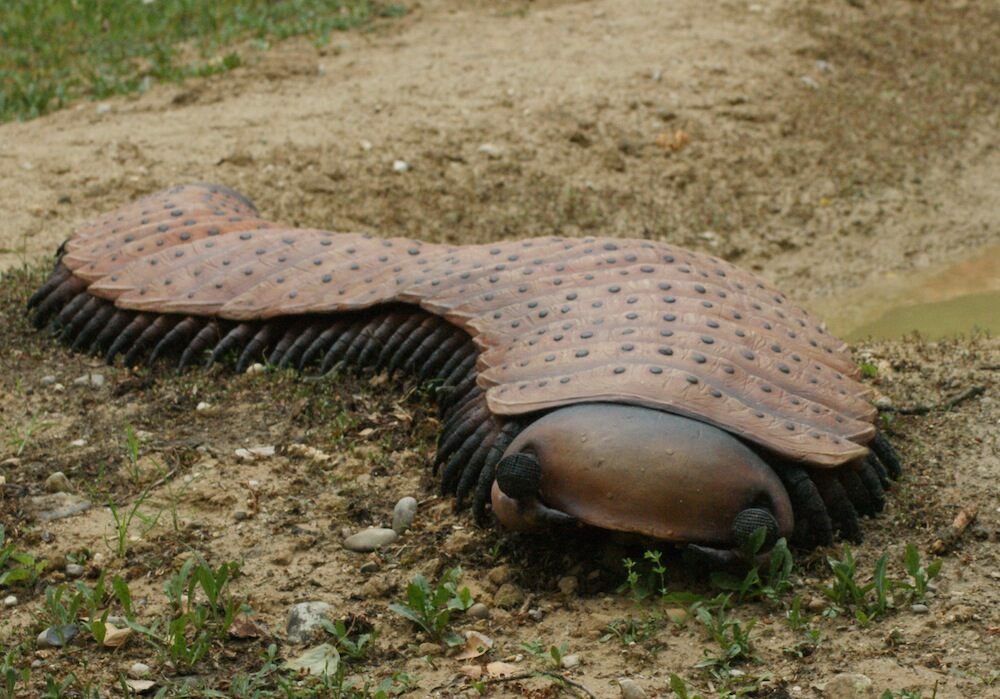
.jpg)
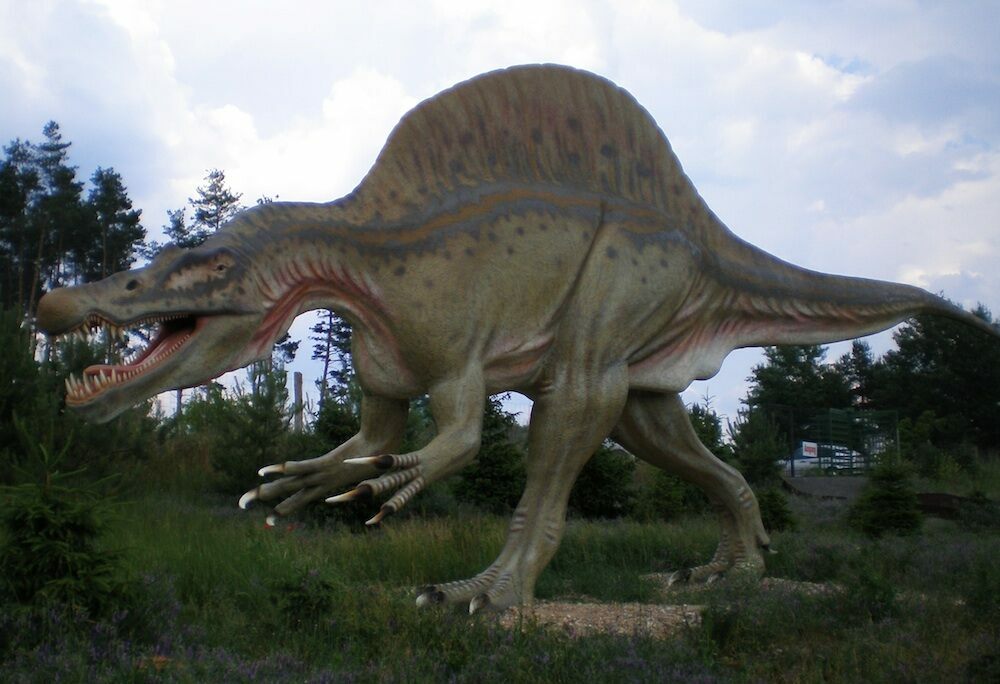
.jpg)
